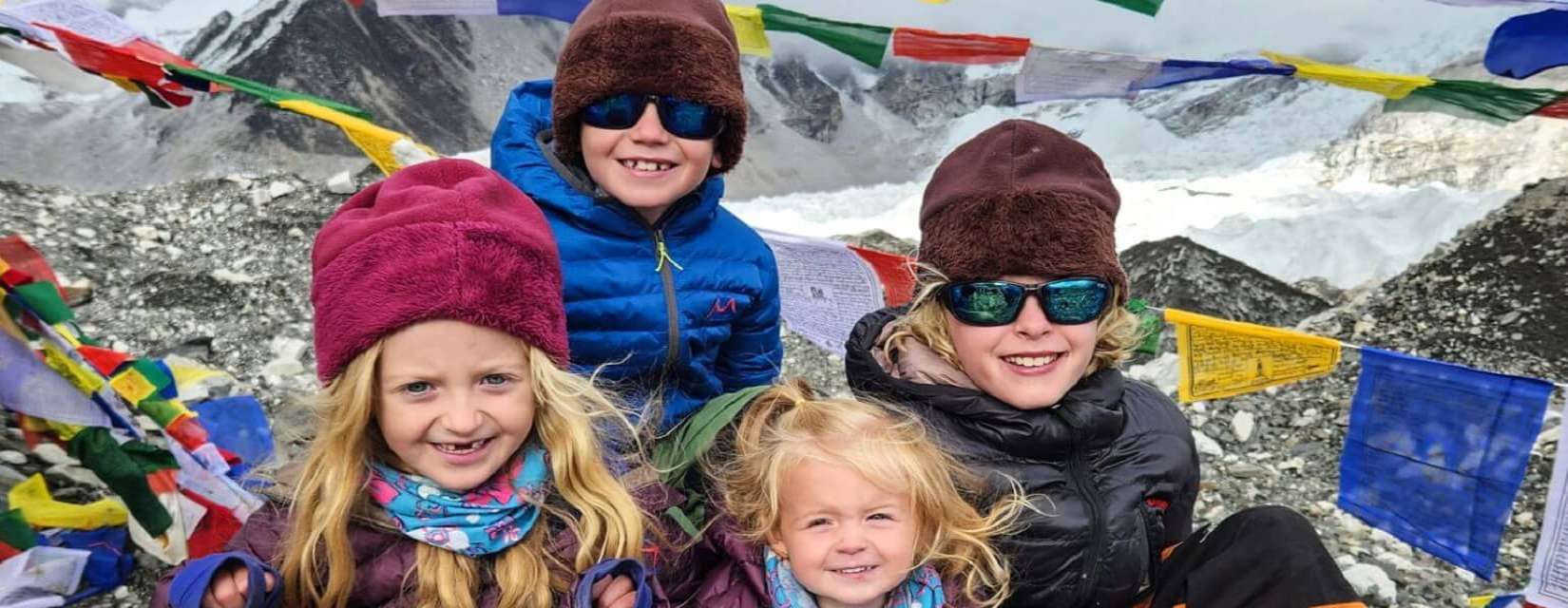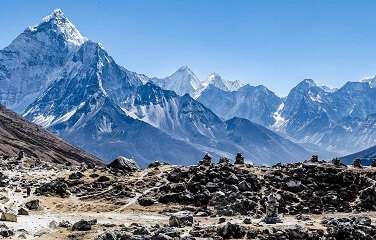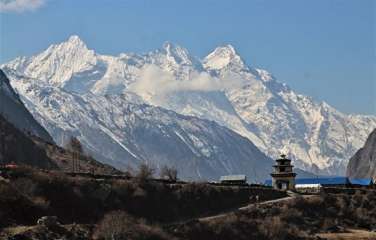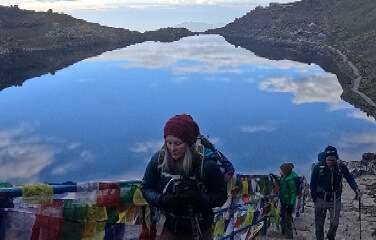1. Preparation and Planning for Children/Kids

A. Physical Preparation:
- Fitness: Ensure everyone, especially children, is in good physical condition. Regular exercise and practice hikes can help.
- Acclimatization: Gradual acclimatization to altitude is crucial. Plan a schedule that includes rest days.
B. Medical Preparation:
- Health Check-Up: Get a thorough health check-up for everyone, focusing on altitude sickness risks.
- Vaccinations: Ensure all vaccinations are up to date.
- Altitude Sickness Medication: Consult a doctor about medications like Diamox.
C. Gear and Clothing:
- Clothing: Layered clothing suitable for cold weather, waterproof jackets, and thermal wear.
- Footwear: Good quality, broken-in hiking boots.
- Equipment: Sleeping bags, backpacks, trekking poles, hats, gloves, and sunglasses.
D. Gradual Training:
- Start Early: Begin training several months in advance.
- Hiking Practice: Regular hikes on local trails to build endurance.
- Stair Climbing: Use stairs to simulate uphill trekking.
- Walking with Backpack: Practice walking with a loaded backpack to simulate trekking conditions.
E. Fitness Routine:
- Cardio Exercises: Include activities like running, cycling, and swimming.
- Strength Training: Focus on leg strength, core stability, and upper body strength.
- Flexibility Exercises: Incorporate stretching and yoga.
2. Travel Arrangements
A. Permits and Documentation:
- Visa: Obtain a Nepal visa (on arrival at Kathmandu airport).
- Trekking Permits: TIMS (Trekkers' Information Management System) card and Sagarmatha National Park Permit.
B. Transportation:
- Flight: Fly into Tribhuvan International Airport in Kathmandu.
- Lukla Flight: Take a domestic flight from Kathmandu to Lukla, the starting point of the trek.
3. Itinerary

Here’s a sample itinerary for a safe and enjoyable trek:
Day 1: Arrival in Kathmandu
- Rest and explore the city.
Day 2: Kathmandu to Lukla Flight, Trek to Phakding
- Altitude: 2,800m (Lukla) to 2,610m (Phakding)
- Duration: 3-4 hours
Day 3: Phakding to Namche Bazaar
- Altitude: 2,610m to 3,440m
- Duration: 5-6 hours
Day 4: Acclimatization Day in Namche Bazaar
- Explore local areas and short hikes.
Day 5: Namche Bazaar to Tengboche
- Altitude: 3,440m to 3,860m
- Duration: 5-6 hours
Day 6: Tengboche to Dingboche
- Altitude: 3,860m to 4,410m
- Duration: 5-6 hours
Day 7: Acclimatization Day in Dingboche
- Short hikes around the area.
Day 8: Dingboche to Lobuche
- Altitude: 4,410m to 4,910m
- Duration: 5-6 hours
Day 9: Lobuche to Gorak Shep to Everest Base Camp, Return to Gorak Shep
- Altitude: 4,910m to 5,364m (EBC) and back to 5,170m (Gorak Shep)
- Duration: 7-8 hours
Day 10: Gorak Shep to Kala Patthar to Pheriche
- Altitude: 5,170m to 5,545m (Kala Patthar) to 4,240m (Pheriche)
- Duration: 7-8 hours
Day 11: Pheriche to Namche Bazaar
- Altitude: 4,240m to 3,440m
- Duration: 6-7 hours
Day 12: Namche Bazaar to Lukla
- Altitude: 3,440m to 2,800m
- Duration: 6-7 hours
Day 13: Lukla to Kathmandu Flight
- Rest in Kathmandu.
Day 14: Departure from Kathmandu
4. Accommodation and Food
A. Accommodation:
- Tea houses/lodges along the route.
- Book in advance, especially during peak season.
B. Food:
- Available at tea houses: local and international dishes.
- Focus on nutritious meals and stay hydrated.
5. Safety and Tips
- Altitude Sickness: Be vigilant for symptoms. Descend if necessary.
- Hydration: Drink plenty of water.
- Diet: Eat high-calorie and carbohydrate-rich foods.
- Pacing: Go slow, especially with children.
- Insurance: Comprehensive travel insurance covering high-altitude trekking.
- Local Guides: Consider hiring a guide and porters.
6. Emergency Preparedness
- First Aid Kit: Include basics and altitude sickness medication.
- Communication: Carry a satellite phone or local SIM for emergencies.
- Evacuation Plan: Know the evacuation procedures and locations of health posts.
7. Cultural Sensitivity
- Respect Local Customs: Be mindful of local traditions and practices.
- Responsible Tourism: Minimize environmental impact and respect wildlife.
Trekking to EBC with children is challenging but can be incredibly rewarding with the right preparation and mindset.
8. Acclimatization
A. Understanding Altitude:
- Explain Altitude Sickness: Educate children about symptoms and the importance of acclimatization.
- Simulated Altitude: If possible, spend time at higher altitudes before the trek.
B. Acclimatization Strategy:
- Slow Pace: Plan a gradual ascent with rest days.
- Hydration: Emphasize the importance of drinking plenty of water.
9. Mental Preparation
A. Setting Expectations:
- Adventure and Challenges: Explain the nature of the trek, including the physical challenges and breathtaking scenery.
- Daily Routine: Describe daily trekking schedules, including start times, breaks, and end-of-day routines.
B. Encouragement and Motivation:
- Positive Attitude: Encourage a positive mindset and the idea that it’s an adventure, not a race.
- Incentives: Use small rewards to motivate during training and on the trek.
10. Gear and Clothing

A. Proper Gear:
- Footwear: Invest in good-quality, broken-in hiking boots.
- Clothing: Layered clothing, including thermal wear, waterproof jackets, and hats.
- Backpack: A comfortable, child-sized backpack with essentials like water, snacks, and a personal first aid kit.
B. Familiarization:
- Using Gear: Ensure children are comfortable using their gear and clothing during training hikes.
11. Health and Safety
A. Medical Check-Up:
- Pre-Trek Health Check: Ensure children are in good health and discuss the trek with a pediatrician.
- Vaccinations: Confirm that all vaccinations are up to date.
B. First Aid and Medication:
- Personal First Aid Kit: Include band-aids, antiseptic, blister care, and altitude sickness medication.
- Emergency Contacts: Keep a list of emergency contacts and nearest medical facilities along the route.
12. Nutrition and Hydration
A. Balanced Diet:
- Nutritious Meals: Ensure a balanced diet leading up to the trek, focusing on high-energy foods.
- Snacks: Carry energy bars, nuts, dried fruits, and other high-calorie snacks.
B. Hydration:
- Water Intake: Teach children the importance of staying hydrated.
- Water Purification: Show them how to use water purification tablets or a portable filter.
13. Travel Logistics
A. Documentation:
- Passports: Ensure passports are valid and carry copies.
- Permits: Obtain necessary trekking permits.
B. Packing:
- Essential Items: Make a comprehensive packing list.
- Weight Management: Ensure backpacks are not too heavy for children.
14. Cultural and Environmental Awareness
A. Respecting Local Culture:
- Cultural Etiquette: Teach children about the local customs and traditions.
- Language: Learn basic Nepali phrases.
B. Environmental Responsibility:
- Leave No Trace: Emphasize the importance of not littering and protecting the environment.
- Wildlife Respect: Teach children to respect local wildlife and habitats.
15. During the trek

A. Daily Routine:
- Morning Prep: Start early to take advantage of the daylight.
- Regular Breaks: Take frequent breaks to rest and acclimatize.
B. Monitoring Health:
- Watch for Symptoms: Be vigilant for signs of altitude sickness.
- Adjust Pace: Adjust the pace based on how the children are feeling.
16. Post-Trek
A. Recovery:
- Rest: Ensure adequate rest and recovery time after the trek.
- Hydration and Nutrition: Continue to focus on hydration and a balanced diet.
B. Reflection:
- Share Experiences: Encourage children to share their experiences and what they learned.
- Celebrate: Celebrate the achievement with a special meal or activity.
By thoroughly preparing physically, mentally, and logistically, you can ensure that your children are ready to tackle the challenges of the Everest Base Camp trek and enjoy a safe and memorable adventure.
Familes and Kids Treks in Nepal





